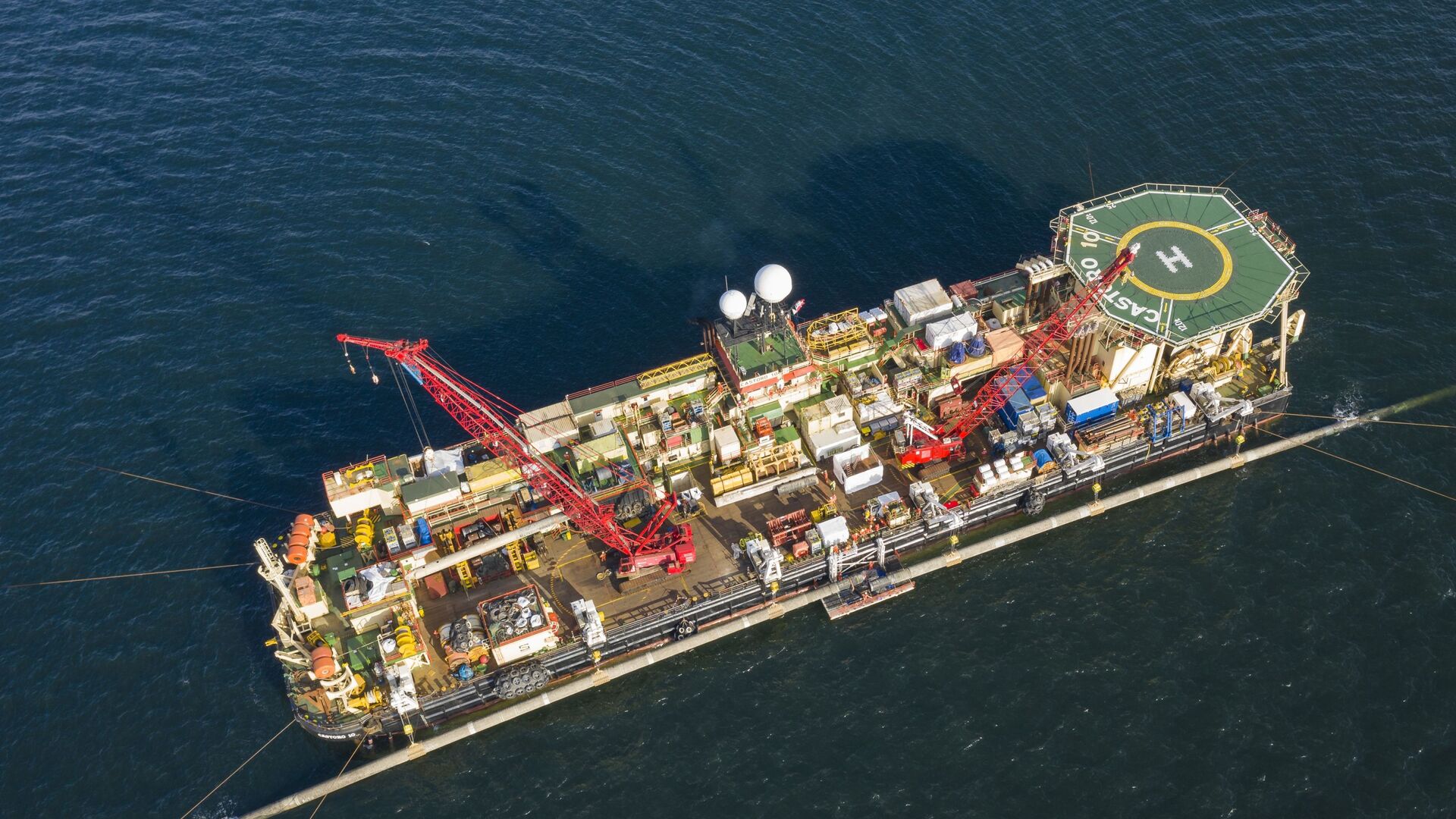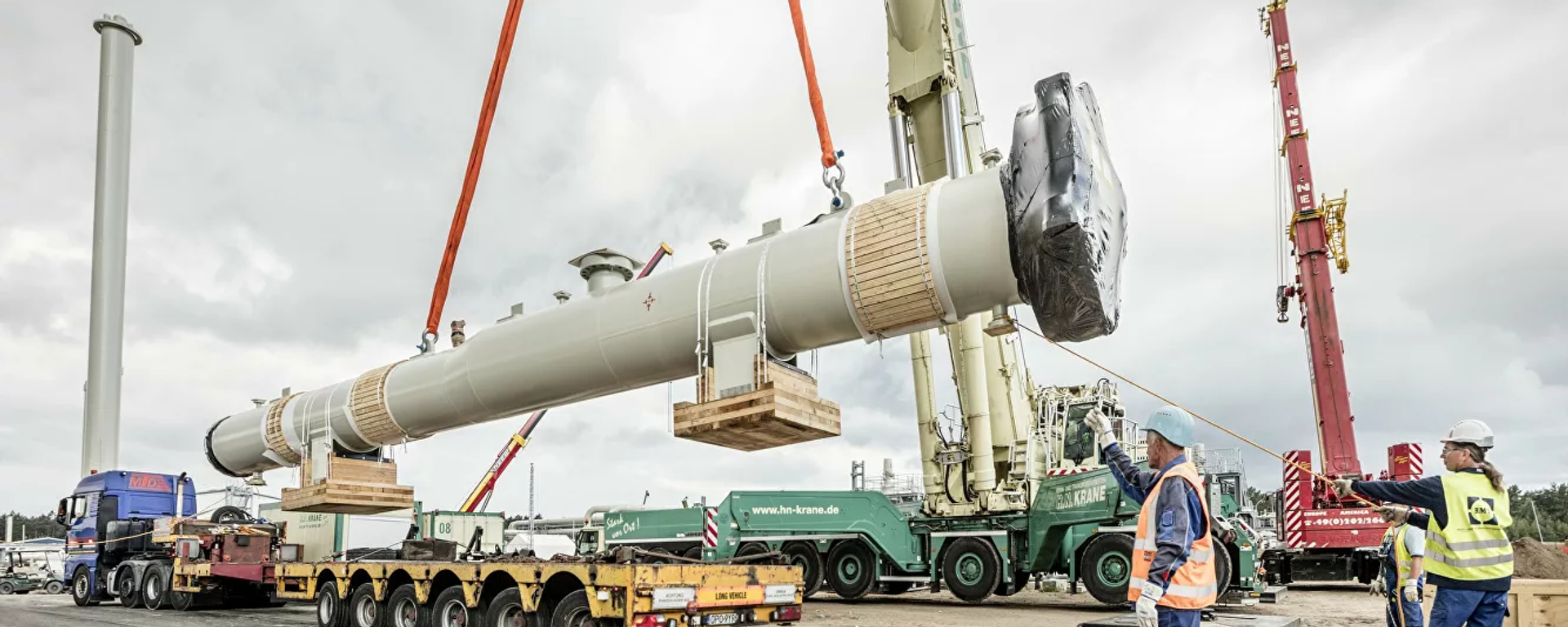The construction site of Nord Stream 2 has been suffering harassment by various vessels and aircraft in recent months, which nearly led to damage to the pipeline itself, according to Nord Stream AG representative Andrey Minin. He stressed that the disturbances were "clearly planned and thoroughly prepared provocations," devised to stop the joint Russian-European project in its tracks.
Minin explained that the present construction site of the pipeline is always surrounded by a 1.5-mile restricted zone, which is out of bounds for any vessels not taking part in the project. Recently, however, several vessels breached these restrictive boundaries a number of times, the official said.
"Nevertheless, we are constantly detecting the presence of foreign states' warships (including by their tactical numbers) next to the technical vessels carrying out construction works. The Polish anti-submarine aircraft PZL-Mielec М-28В1 Rbi [also] regularly conducts flyovers of the construction area at low altitude and close to the pipe-laying vessel", Minin said.
🇵🇱1006 PZL-Mielec M-28B1R Bryza 1R Poland - Navy pic.twitter.com/JkK5ivOMN2
— Hugo Roberto Cabral Strata (@roberto_strata) March 22, 2021
PZL-Mielec is not the only part of the Polish military which ventured into the restricted area lately, Minin revealed. A Polish Navy warship of unspecified class under tactical number 823 carried out manoeuvres in the direct proximity of the Fortuna pipe-laying vessel on 29 March Minin said. According to him, one of the project's supply vessels was forced to mirror the Polish warship's movements moving parallel to it.
Nord Stream AG released photos and videos of the warships, which tried to interfere in the pipeline's construction process.
Photos The #NordStream2 area , Warships interfering with the laying of the gas pipeline. pic.twitter.com/yrtc2vvKC1
— www.anoncandanga.com🚨💣 (@anon_candanga) April 1, 2021
Nord Stream 2 announces increased activity of foreign warships in the pipeline construction zone. The actions of foreign vessels in the construction zone of Nord Stream 2 are provocative and could damage the pipeline, the company noted https://t.co/pnvxJ2yzuo #Russia pic.twitter.com/CM02xRWZmT
— Liveuamap (@Liveuamap) April 1, 2021
Pipeline Was Nearly Damaged in March
The Nord Stream 2, which according to the latest report is 95 percent complete, faced even graver danger on 28 March, when an unidentified submarine partially resurfaced less than a mile away from the pipe-laying ship, Minin revealed.
"Given that Fortuna's anchor lines spread more than one mile away, the submarine's actions could disable the entire anchor positioning system of the pipe-laying barge and thus lead to severe damage to the pipeline," Minin claimed.
The pipeline's integrity was also repeatedly threatened by fishing vessels that ventured into the restricted waters around the construction site several times in recent months, failing to respond to communication attempts by the Nord Stream AG workers.
Minin described one such incident that took place on 21 February 2021: Polish fishing ship SWI-106 entered the restricted zone and did not respond to repeated demands over the radio to quit the area. One of Nord Stream's supply ships, Vladislav Strizhov, was forced to plot an intercept course to "push out" SWI-106, but the fishing vessel failed to change its direction which resulted in a collision between the two, Minin said.
Only after that, the SWI-106 opened a communication channel and admitted its guilt in the collision. Minin explained that had it not been for the actions of the Vladislav Strizhov, the fishing ship would have collided with the Fortuna itself, which, in turn, could damage the pipeline.
The Nord Stream AG's representative said that there have been numerous accounts of vessels intruding within the secure area and perpetrators have not always been identified. Still, the company has lodged official complaints about the ships which have been identified and have tried to disrupt the pipeline's construction.
Nord Stream 2 Problems
Despite the pipeline's construction approaching its end, the multi-billion-dollar joint venture of Russian and European energy giants has been facing an increasing number of problems lately. Namely, the project is opposed by the US, which claims that Moscow will use it as leverage. Washington imposed sanctions against the pipeline and threatens to slap more on any company working on the project under the pretext of defending European energy security. The White House previously suggested that the EU ought to buy liquefied natural gas from the US instead of cheaper Russian pipeline gas.
These efforts were not well received in some European countries, which plan to benefit from Nord Stream 2, such as Germany, which slammed the extraterritorial sanctions approach of Washington. However, the US also has allies in the EU, who are keen to see Nord Stream 2 put under pressure, namely Poland.
The Kremlin, in turn, slammed US attempts to interfere with the pipeline's construction, insisting that it is a purely economic project. Russian Foreign Minister Sergei Lavrov stressed in his 1 April statement that Moscow will never use the energy supplies as a tool of political pressure in Europe.




